|
Great Egret Ardea alba Garza Real,
|
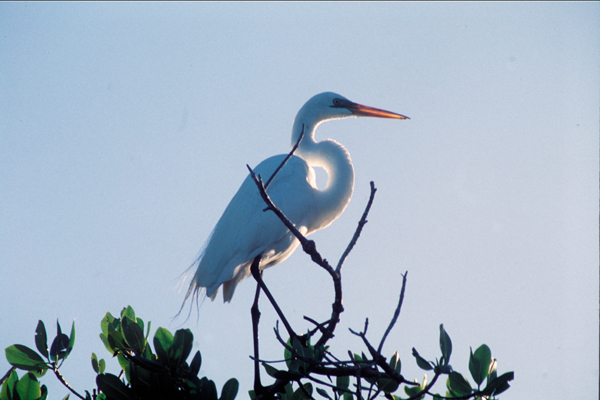 |
|
Photo: L. Miranda
|
|
Great Egret Ardea alba Garza Real,
|
 |
|
Photo: L. Miranda
|
|
IDENTIFICATION: A large white heron, with a long, yellow bill, and dark legs. In flight it usually curls its long neck in an "S" shape. Length: 80-104 cm.; weight: 700-1,500 g. VOICE: Squawks when disturbed, but usually silent away from nesting colonies. Audio 3 (M. Oberle). HABITAT: Fresh and salt water ponds, wetlands, canals, mangrove swamps, estuaries, lagoons, moist grassy fields, even small urban streams. HABITS: The Great Egret usually forages alone, either walking slowly or waiting for its prey to approach. It feeds on fish, typically less than 12 cm. long, and also on frogs, insects, crustaceans, and sometimes small birds. It defends a feeding territory against other egrets and herons. Both sexes build a stick nest in a treetop colony over water. In courtship displays, a pair will stretch their necks, and clack their bills. The female lays 3-5 eggs. Incubation lasts 25-26 days, and the chicks fledge at about six weeks. Birds breeding in the eastern USA winter in the southern USA and the Caribbean. Great Egrets banded in New Jersey and Maryland have been recovered in Puerto Rico. STATUS AND CONSERVATION: Common, permanent resident of Puerto Rico, with the population increasing in winter as migrants arrive from North America. This species was hunted for its feathers a century ago---like many other egrets and herons---but a public outcry stopped the hunting---one of the early successes of the conservation movement. More recently, its breeding success suffered from DDT exposure, but has recovered since that insecticide was banned. However, destruction and pollution of wetlands have decreased habitat for this species. RANGE: Breeds in eastern North America south through the Caribbean and Central America to central Argentina. It is also found widely in Africa, Asia and Australia. Common in most wetlands, even in urban areas, such as near the San Juan airport. TAXONOMY: CICONIIFORMES; ARDEIDAE. Formerly called Common Egret, American Egret, and Great White Egret. |
|
 |
|
Photo: A. Sánchez Muñoz
|
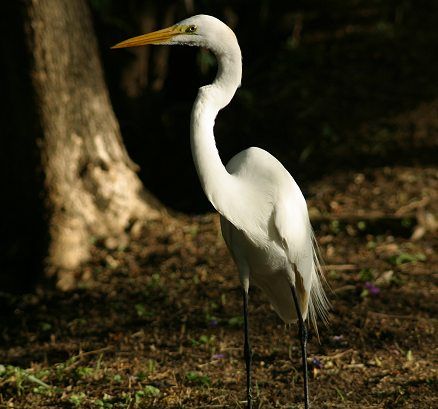 |
|
Photo: A. Sánchez Muñoz
|
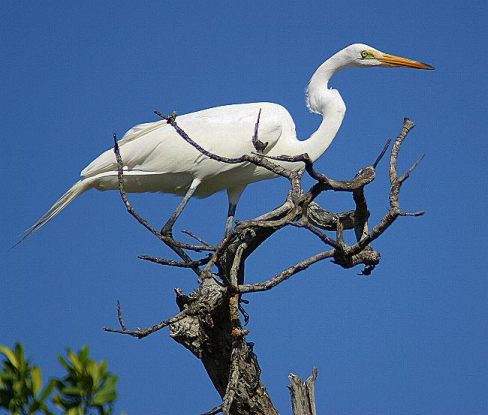 |
|
Photo: A. Sánchez Muñoz
|
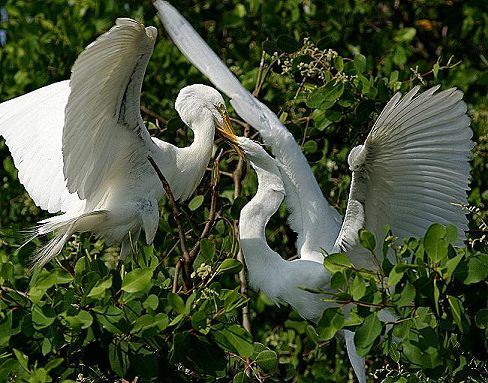 |
|
Photo: A. Sánchez Muñoz
|
 |
|
|
Photo: G. Beaton
|
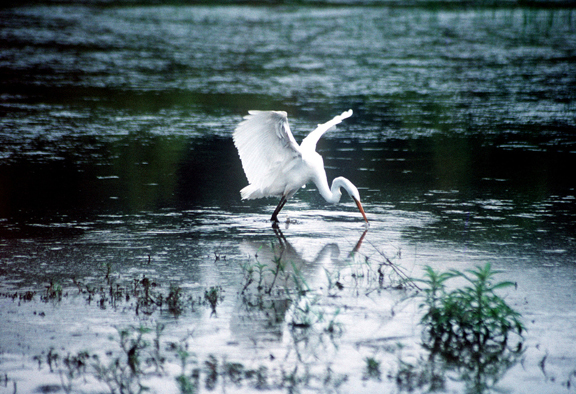 |
|
|
Photo: G. Beaton
|
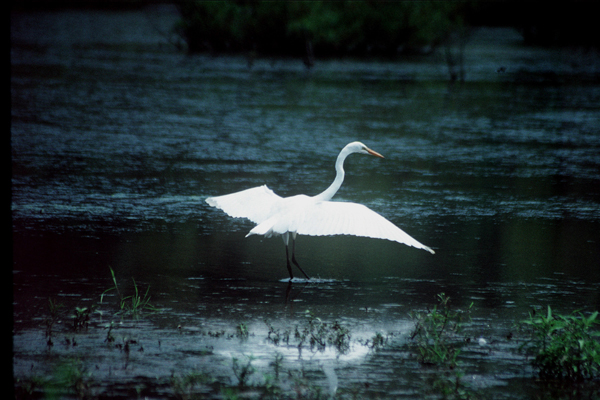 |
|
|
Photo: G. Beaton
|
|
References Bent, A.C. 1926. Life histories of North American marsh birds. Smithsonian Instit. U.S. National Museum Bull. 135. (Reprinted by Dover Press, NY, 1963). del Hoyo, J., A. Elliott, and J. Sargatal, eds. 1992. Handbook of Birds of the World, Vol. 1. Ostrich to ducks. Lynx Edicions, Barcelona. Ehrlich, P.R., D.S. Dobkin, and D. Wheye. 1988. The birder’s handbook: a field guide to the natural history of North American birds. Simon and Schuster/Fireside, NY. McCrimmon, Jr, D. A., J. C. Ogden, and G. T. Bancroft. 2001. Great Egret (Ardea alba). No. 570 in The birds of North America (A. Poole and F. Gill, eds.). The Birds of North America, Inc., Philadelphia, PA. Miranda, L. and J.A. Collazo. 1997. Food habits of 4 species of wading birds (Ardeidae) in a tropical mangrove swamp. Colon. Waterbirds 20: 413-418. Moskoff, W. 1998. Death in the nest: siblicide among birds. Birding 30(6):511-515. Raffaele, H.A. 1989. A guide to the birds of Puerto Rico and the Virgin Islands. Princeton. Raffaele, H.A. 1989. Una guía a las aves de Puerto Rico y las Islas Vírgenes. Publishing Resources, Inc., Santurce, PR. Raffaele, H.A., J.W. Wiley, O.H. Garrido, A.R. Keith, and J.I. Raffaele. 1998. Guide to the birds of the West Indies. Princeton. Saliva, J.E. 1994. Vieques y su fauna: Vieques wildlife manual. U.S. Fish & Wildlife Service, Boquerón, PR. Next related species in taxonomic order Previous related species in taxonomic order |
|